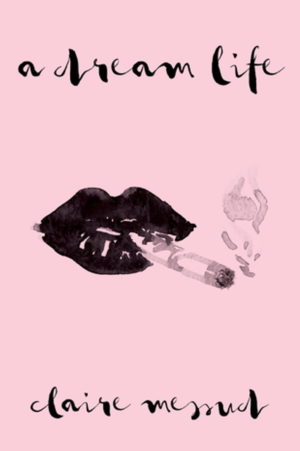A Dream Life
by Claire Messud
reviewed by H. L. Onstad
“We shape our buildings and afterwards our buildings shape us,” Winston Churchill famously declared during a debate over the reconstruction of the Commons Chamber, which had been destroyed during the blitz in 1943. In her new novella, A Dream Life, Claire Messud shows how we are shaped not just by our physical surroundings but also by invisible social constructs.
In A Dream Life, it is 1971 and Alice Armstrong has just relocated to Sydney with her family, including her two young daughters, Sadie and Martha. The family leaves their small Upper West Side apartment to rent a large manor house near Sydney Harbor, where Alice’s husband Teddy has been transferred. Messud describes the family’s first impression of the house they’ve rented sight unseen in lush prose:
Upon arrival, then, in the Deeds residence (“Chateau Deeds”, as the father jokingly dubbed it, a name that would live in their family lore forever), the two girls ran squealing from room to room; they clattered along the broad parquet hall and peered into the great drawing room, with its alcove study and foggy drapes; into the panelled dining room, the morning room, the library; they tumbled through the conservatory in a giggling sweep, and back to the hall, where they paused in bafflement at the green baize door until their mother pushed it ajar, allowing them the run of the back of the house — the kitchen, the pantry, the coat room, the laundry room, so many shiny floors upon which little feet might create a thundering roar.
Readers of Messud’s autobiography in essays, Kant’s Little Prussian Head and Other Reasons Why I Write, will recognize this description as Messud’s own childhood home. Messud herself moved from the United States, where she was born, to Australia in the 1970s, writing: “Our rented house in Sydney remains the grandest place I have ever lived.” Many details, even the collection of Dresden shepherdesses, reappear in A Dream Life. The house is a central figure and the catalyst for Alice’s transformation.
Readers may recognize undertones of Katherine Mansfield’s 1922 short story, “The Garden Party,” which also hinges on “the green baize door that led to the kitchen regions [which] swung open and shut with a muddled thud.” Here, too, the green baize door that attracts the young girls’ attention is lined with cloth to muffle the sound between two regions of a house—the family’s quarters, and the servants’—a potent symbol that foreshadows things to come.
Messud is most incisive when describing precisely how and when a woman gradually loses touch with herself by giving in to prescribed roles and expectations. Of Alice, she writes: “She had, in New York, all her adult life, been herself, a sometime graduate student in art history, a part-time assistant in children’s book publishing, a lover, a mother,” but in Australia, with “the rhythms of the artificial domain reverberating around her, she would become something else, something unimagined: what Chateau Deeds required: the lady of the house.”
Life in a grand manor may seem like a dream, but Alice soon realizes the house requires considerably more upkeep than she alone can provide. As housework piles up, Alice sets out in search of “help.” Since she is not a natural at managing such a large household, her efforts fail—to comic effect. A housekeeper named Africa leaves the continent, Miss Bliss proves anything but blissful, and Miss Dewar proves unsuitable for other reasons. “Housekeeping,” which is part “women’s work,” part intimate relationship, befuddles Alice. Therein lies the novel’s central problem: intimacy and interdependence complicate the terms of employment.
Messud has long been a keen observer of social dynamics among women; in her 2013 novel The Woman Upstairs, she examined the boundaries between friends of unequal status and what happens when those boundaries are transgressed. In A Dream Life, Messud explores these themes further, revealing stark differences between her characters through their diction and conduct. Amusingly, Alice, in trying to recruit a potential housekeeper, assures her: “Me, I’m not attached to things,” to which the housekeeper replies, “Course you’re not.” While Alice is not always particularly likable, her actions reveal a familiar uncertainty of modern life, when one is often switching between providing service and being served, employing and being employed.
The subject is personal for Messud. In 2001, Messud published a pair of novellas as The Hunters; one novella focuses on a Ukrainian immigrant and housekeeper who poignantly copes with loneliness, memory, and the end of her decades-long relationship to her employer. In an essay on Magda Szabó’s 1987 novel The Door, about a long-term, unconventional relationship between a woman and her housekeeper, Messud mentions how much this novel affected her. Messud reveals her own relationship with a housekeeper named Rosa who worked for her family since 1947, first for her grandmother, then for her mother. She describes the close relationship between her grandmother and Rosa, both young widows who never remarried: “The two aging women relied on one another, confided in one another, bickered, and at times quarreled outright like blood relatives. Their emotional bonds were contorted by the underlying transactional relationship.”
The revelation speaks to Messud’s reasons for tackling the subject, yet she does so in A Dream Life with deep humor. Behind its grand facade, A Dream Life is a slim, disarming book that will entertain readers while offering a classic Messud undertow for those after more depth. The book reminds us that we are shaped by the visible and invisible structures we adopt as our own, and that we dream accordingly.
Published on May 26, 2022

